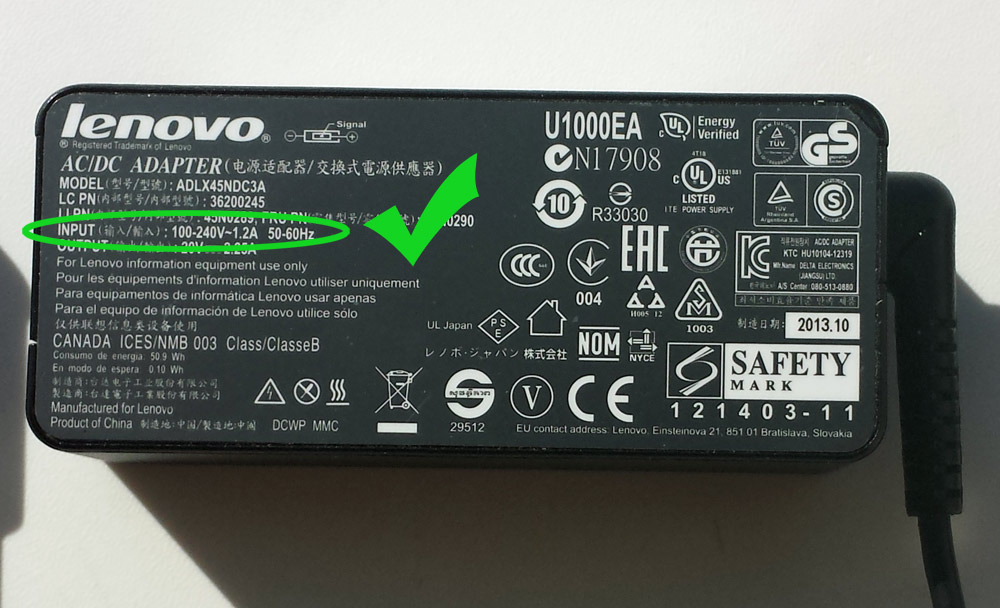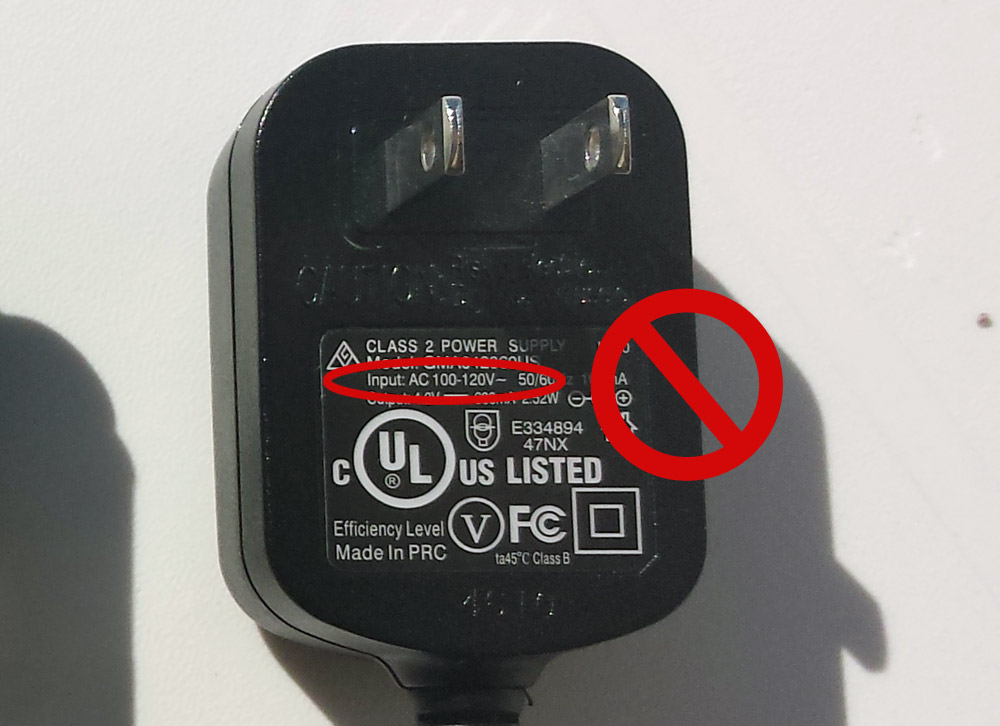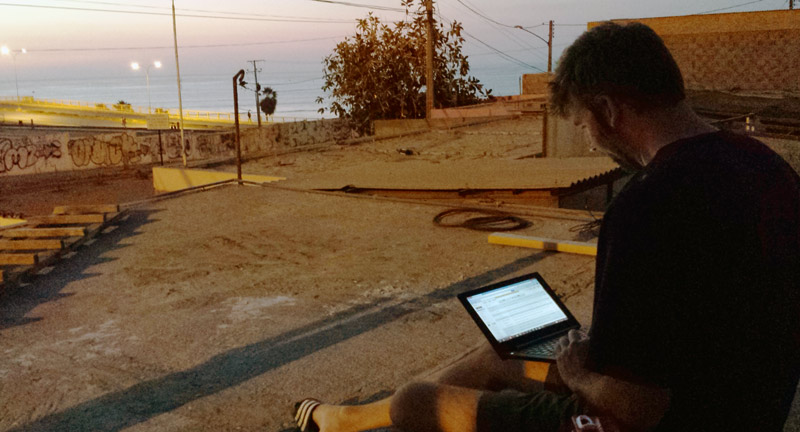When preparing for a long term excursion how much tech gear to take comes down to basically three questions: What do you really need or think you need? What can you live without? How much are you willing to carry? I am the first to admit that we are not hardcore backpackers. We are definitely carrying more weight than we probably need but we don’t really care since we only travel, on average, every six days. And when we do travel, we usually aren’t walking very far. Here is a detailed list of the technology items and services we have and use. This post focuses mostly on work, storage and security. I will be doing another post in the future to cover entertainment options.
Laptop
When it comes to gambling I never risk more than I am prepared to lose. In the same vein I didn’t want to buy a laptop so expensive that I would be sick if I lost it or if something happened to it. I wanted something that could run all of my software easily, would fit in my backpack, be durable enough to make it through a year or more, and would be comfortable to use for work. I also didn’t want to get a computer that was too up to spec because I didn’t want to be tempted to download any new games off Steam.
I found a nice little Lenovo IdeaPad that was on sale on Amazon for around $300. It has worked pretty well. It could use some extra RAM as the 4GB on board aren’t quite enough and it can bog down from time to time and the battery doesn’t last very long. I’m lucky if I can get 2 hours out of it. The Wi-Fi adapter has a pretty good range. I don’t use the touch screen much as it doesn’t disconnect from the keyboard and is awkward to use. It isn’t the best laptop I could have bought but the price was right and it does what I need it to do.
What to look for in a travel laptop?
- As small as you’re willing to get and still be able to type and see the screen comfortably.
- Long battery life – I’ve found that outlets are rarely in convenient locations. You won’t always be able to be use the device while it is plugged in unless you like sitting on the floor in the corner on the other side of the room.
- A comfortable, durable keyboard. You’ll be typing a lot so you better like it.
- Sturdy enough design. Not a deal breaker unless you’re the type who doesn’t take care of their toys.
- Plenty of storage space. If you can afford a solid state drive, get one or upgrade to one.
- Plenty of RAM if you’ll be running any programs that are memory hogs. You can get by with 4GB but 8GB would be better.
- An illuminated keyboard is a definite plus as you could be working in some dark places.
Here are some laptops that are similar in size, wieght and specs as the one I’m using:
- ASUS K200MA-DS01T 11.6-Inch HD Touchscreen Laptop
- Dell Inspiron i3147-3750sLV 11.6-Inch 2 in 1 Convertible Touchscreen Laptop
- Lenovo Yoga 2 11.6″ TouchScreen 2-in-1 Laptop PC
Whether your laptop is sturdy or not, invest in a case. It is an extra layer of protection even if it is in your backpack.
So, what happens if your laptop is stolen or broken? What about everything stored on it?
External Hard Drive
Every photo taken on this trip, every program I have installed on my computer, and anything else of any importance is backed up on an external drive. I would have preferred a solid state drive but my priorities were on storage space and affordability so I went with the Toshiba Canvio 500 GB USB 3.0 Portable Hard Drive. I believe in redundancy. This way if anything happens to either the external hard drive or the hard drive in my laptop they can be replaced and information can be copied quickly.
You’ll want a case for this as well: AmazonBasics Hard Carrying Case
But what happens if something happens to both of your hard drives at the same time?
Online Backup
As I said, I believe in redundancy. I have suffered hard drive failures before. The first time I didn’t have a data backup service. I lost hundreds of gigs of music and photos that I was never able to get back. The second time it happened, I did have a service. I lost nothing other than the money for a new hard drive. I use a service called Crash Plan. Anytime I add new files to my computer or modify existing ones it will back them up to their servers if an internet connection exists. I use Crash Plan because:
- It is affordable.
- It backs up everything including video without you having to specify specific files. (I’m looking at you Carbonite.)
- It doesn’t throttle back up speed. (Still looking at you Carbonite.)
- If you delete something from your computer to save space, you can still find it in your back up. (Yes, Carbonite, still looking.)
One little word of advice: If you plan to take a library of music and video with you make sure you have your laptop set up and your back up service chosen at least a month before you leave on your trip. It takes a while for the initial backup. I didn’t think about this and due to accessibility and the quality of Wi-Fi connections, my computer wasn’t fully backed up until the third month of our trip.
If you have a backup service why do you also have an external hard drive, isn’t that overkill?
Trust me, the data backup is a nice safety net, but if you lose everything you will not want to download hundreds of gigs of data over a mediocre internet connection. It will be much easier to restore from your local external drive.
What about security? Aren’t you worried about accessing the internet over unsecured networks?
Anonymous VPN Service
Okay, analogy time. You ever get a fountain soda with crushed ice? They’re awesome but when you get low on soda you can’t just tilt the glass up and drink the last few drops or else you’ll end up with a face, and probably a lap, full of crushed ice. To get that last little bit of soda at the bottom you need a straw. A Virtual Private Network sort of works the same way. Imagine that the soda at the bottom is the data or website that you want to access and all of those bits of crushed ice are the governments, corporations and hackers who want to see what you’re going to do with that data. Well, a VPN is the straw. It creates a safe, uninterrupted link between you and whatever you’re accessing on the web.
Why would that be useful? Several reasons. Many governments put restrictions on what types of websites their citizens can access. Being on the road means you could be accessing the internet via unsecured Wi-Fi services and any data you are passing to and fro could be accessible to anyone with the moxie to look for it. A lot of websites and services (Like, oh, I don’t know, Netflix, for example) are only accessible in certain countries. An anonymous VPN helps resolve these issues a vast majority of the time.
We use a service called TorGuard. It costs $60 a year and has a few features that I really like. First and foremost it allows access through multiple devices. That means that both Julie and I can have our laptops on VPN as well as our phone and any other device we have that is supported. Also, they don’t keep any logs of what you access. That means there is no record of what you access or where you access it from.
Password Vault
We have passwords for everything: bank accounts, credit cards, websites, this blog, client accounts and more. Using the same password for multiple accounts is a bad idea. Using simple or short passwords is a really bad idea. Keeping an Excel spreadsheet on your computer with all of your usernames & passwords is a massively bad idea. How do you keep all of your accounts straight and secure? Get a password vault service. All of your usernames & passwords are securely stored and accessible by you from anywhere. If your laptop gets stolen you don’t have to worry about anyone having access to your accounts. I use a service called Splash ID and it just isn’t for website credentials. I have a lot of credit cards that I didn’t bring on the trip that I occasionally need to use for purchases at home. I have all of that information as well as all of the information of the cards I am carrying stored in there along with all of their customer service numbers. If I ever need to use one or have a problem I have access to all the information I need.
What’s the catch? You have to create and remember one super long, complicated password and if you forget it you can’t get into your account. Ever. You could show up to their offices in person with the credit card you used to pay for the service and a notarized birth certificate and they still wouldn’t unlock the account.
Aren’t you being a little paranoid here with all of the back-ups and security measures?
It’s only excessive until you need it. I don’t have a job and would like to keep it that way. Fail safes will be utilized.
Tablet/E-Reader
Julie brought her Kindle Fire for reading and watching movies without having to always be on a laptop. How many gadgets you want to take comes down to how much you’re willing to carry. If you’re a reader it can take up less room than a book. Our hometown library system has books available for Kindle no matter where you are in the world so she’s read something like 30 books up to this point.
If you have an old school Kindle that’s just for reading books, you’re all set. If you have a Kindle Fire and want to be able to use services like Netflix or other geo-limited sites you’ll want something that supports VPN connections. If you have an older Kindle Fire, be warned that they don’t support VPN connections by default and require some modifications. The newer Kindle Fires
do allow VPN connections and any tablet running Windows, Android or iOS should be good to go.
Plug Converters
You are going to need outlet converters for anything that plugs into a wall: Travel Smart by Conair M-500E Polarized Adapter Plug Set. Most of your electronics work regardless of the voltage so you shouldn’t need anything that converts power, just the plug shape. How can you tell? Check the specs on the power adapters. The one exception to this is electric shavers. They tend to run only on their native voltage so if you plan on taking one along you’ll need one power converter.


Wow, you seem to have an awful lot of devices. Is one set of plug converters enough to keep everything charged?
Glad you asked that. No, no it isn’t.
Power Strip
Sharing one plug adapter is a pain in the ass. Even if you are charging your smaller devices via USB while you are simultaneously charging your laptop, it is still a pain. Getting a small travel power strip is the best way to shorten charge times and prevent power hogging arguments. It is worth carrying around because it makes things so much easier. We have a Monster MP OTG400 BK Outlets To Go Power Strip with four plugs and it is great. We didn’t leave home with one but had friends bring one when they visited us on the road. Absolutely worth it.
Wireless Mouse
I can’t stand using the touchpad on laptops when I’m trying to do work. They drive me crazy. I want a mouse. There are plenty of wireless mouse options available in an array of sizes. Get something that’s comfortable as you’ll be using it for a while. I have a Logitech Wireless Mouse M325 that connects via USB. I love it but if you are short on USB ports, you can always get a HP X4000b Bluetooth Mouse
..
Hands Free Headset
If you will be calling home through your computer or using Skype, do yourself and your loved ones a favor and do not rely on the built in audio devices. I brought the wired USB one I got with my Rosetta Stone Italian five years ago. It’s a bit bulky but it works. Here is a simple headset: Logitech ClearChat Comfort/USB Headset.
USB Key/Flash Drive
Chances are you have some of these scattered around your home office or desk. In case you don’t have one, or want one with more storage check out the Kingston Digital DataTraveler SE9 32GB USB 2.0 Flash Drive. You may not need it the entire trip, but it hardly takes up any space, it weighs next to nothing and if you hit a point where you could use one you’ll wish you had it. They can come in handy If you want to swap files with a fellow traveler and don’t have access to the internet.
It seems like you’re missing something…oh yeah, what about a phone?
There is not room in this post to cover what I have to say about phones.
Phone
This will be updated once I post my phone service review and recommendations. Coming soon-ish.
I hope what I have listed has been helpful. I will try to keep this up to date if anything new or better presents itself. If you have any questions or recommendations, please leave a comment.



That’s some good advice even if you never leave home.
Thanks. I’ve gotten that from a few people. Getting a password vault and a VPN had been on my to-do list at home for several months maybe even years. It took this trip to finally getting around to it.
Hey Mark,
Nice post! You could complement it on how you deal with getting internet connection, if you use any special software or service etc.
Nice info you got on your website. If you ever come back to Barcelona contact us!
Alex – http://www.lifeonbikes.com
Alejandro recently posted…Barcelona by Bicycle
Thanks, Alex. No special software or services for internet. We are just very careful when looking for hostels or apartments that have good wi-fi.